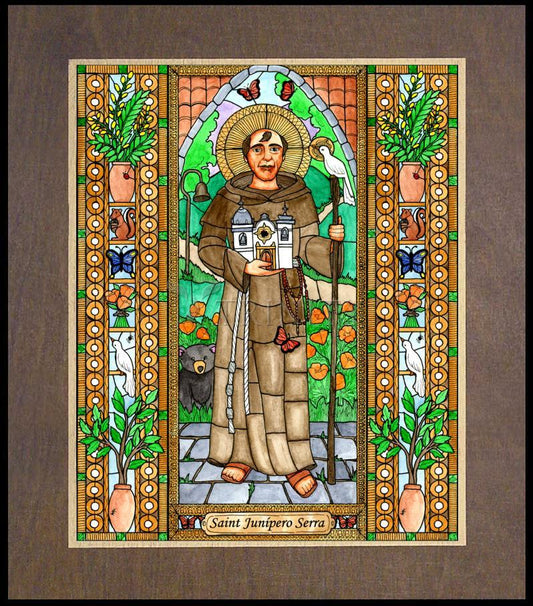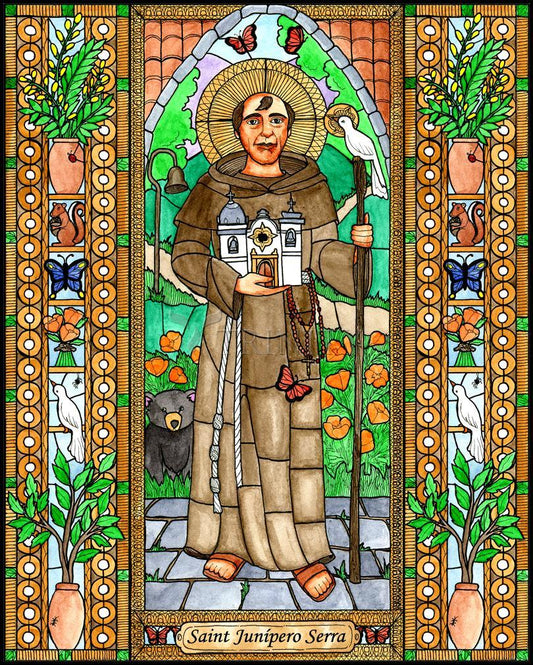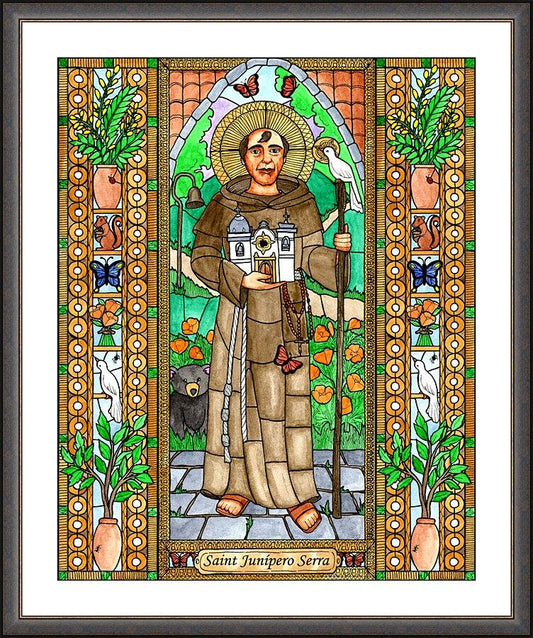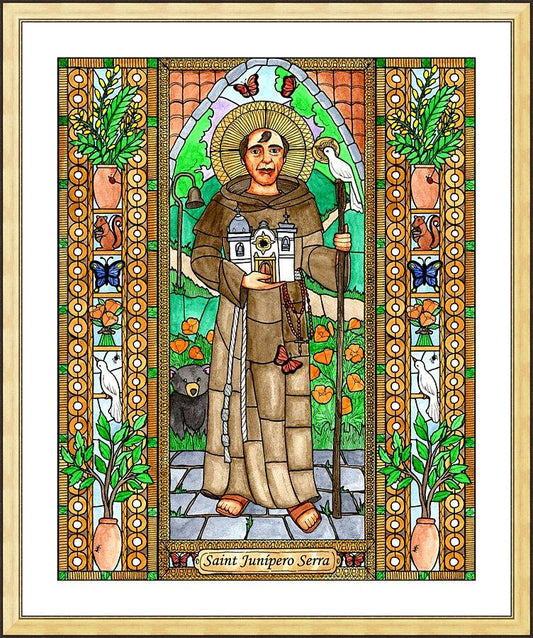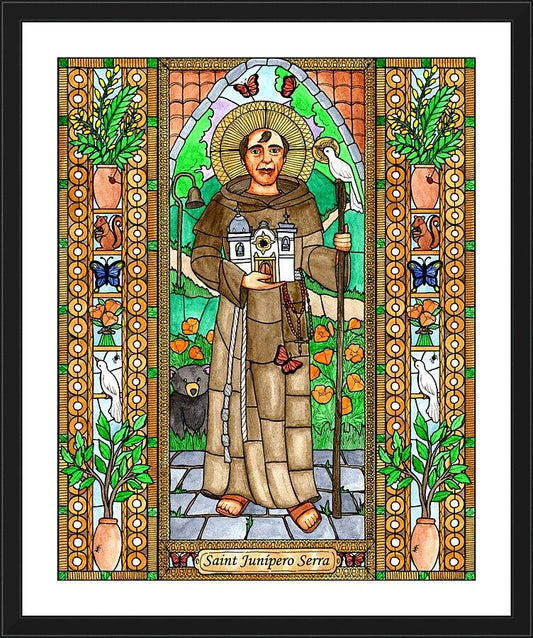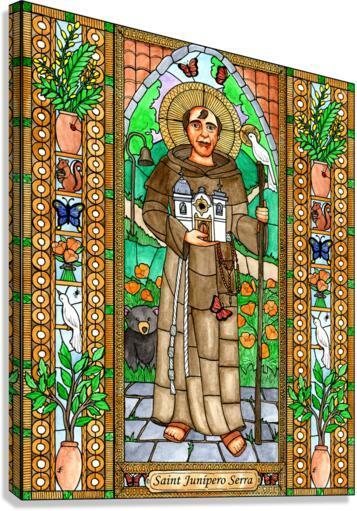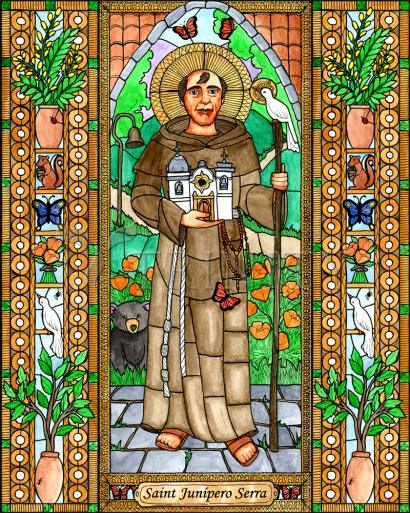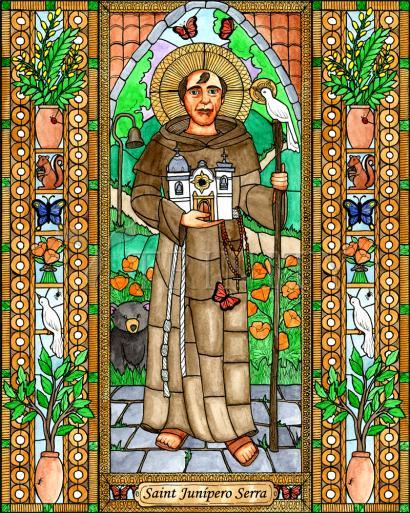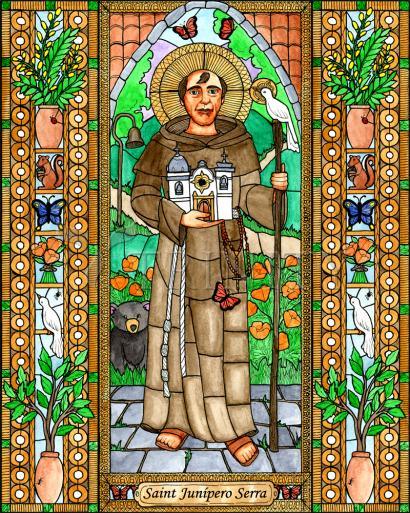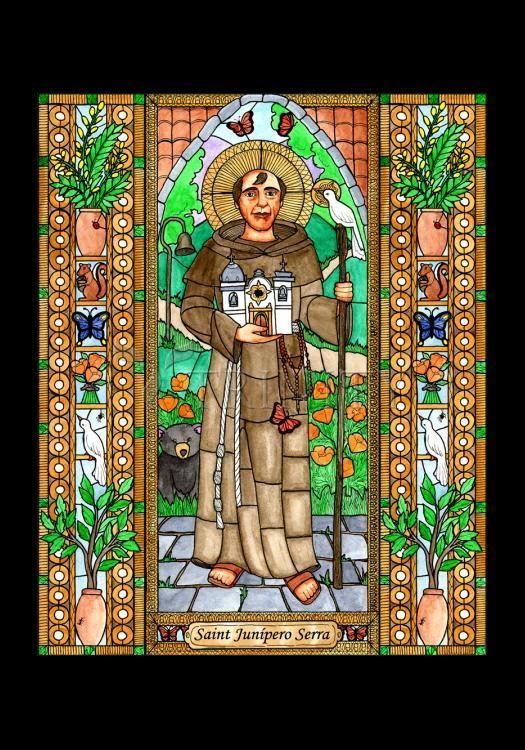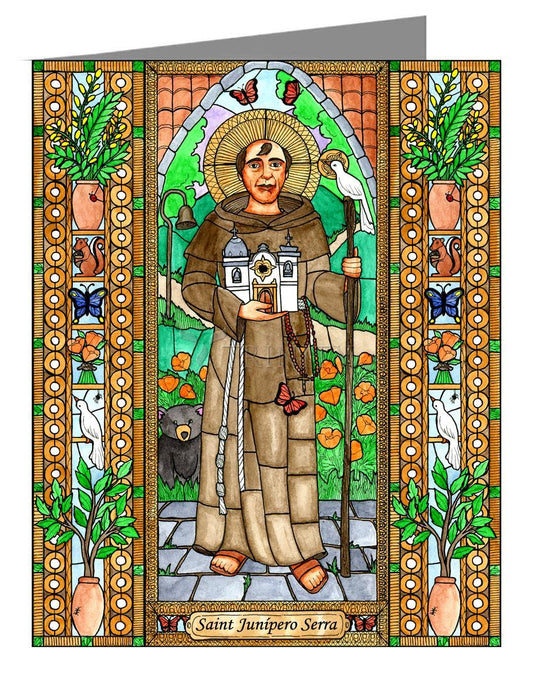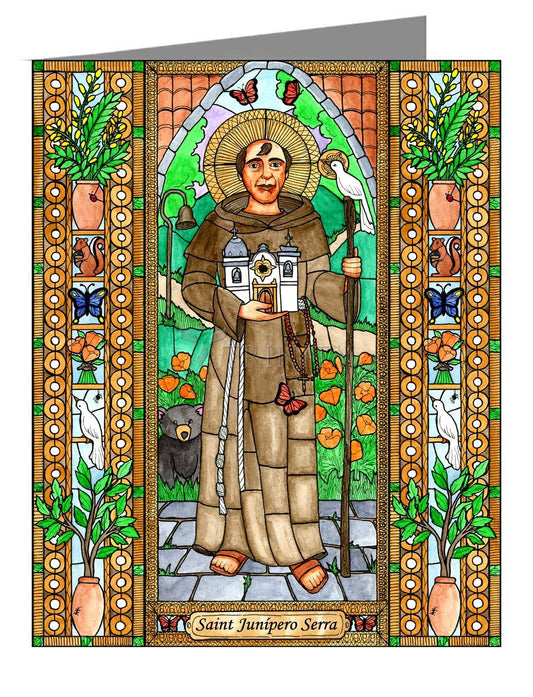ARTIST: Brenda Nippert
ARTWORK NARRATIVE:
Miguel Jose Serra was born in Majorca, Spain in 1713. His parents were farmers and as Miguel grew, they noticed he was a gifted child as he excelled in his studies, especially Latin. He also had a strong singing voice and a knack for creative problem solving, all of which would serve him well in his future adventures. He became a Franciscan priest and excelled as a teacher, becoming a professor at only 24. Because of his obvious gifts in academics, everyone was surprised when his extraordinary zeal for spreading the Gospel inspired him to become a missionary in the new world. Little did they know, it would take a brilliant man to reach the heights Serra would reach in his accomplishments for the faith.
He first arrived in Mexico where he taught and evangelized for several years before being chosen to go to California to take over a budding Mission system from the Jesuits. As the conquistadors marched through the vast wilderness, building forts and conquering the land for Spain, Father Serra and his band of Franciscans converted the natives and enlisted their help to build Missions. He then taught the new converts to farm with new methods and live in community as Christians. Father Serra poured out his life to bring the natives of California to God. In a short time, he converted over six thousand and built nine missions. His influence is still felt today, as God is stilled praised at the missions he founded and he is recognized as playing a major role in California history with numerous statues, shrines, museums, and even schools and streets that bear his name in the state he helped create and throughout the country.
His feast day is July 1.
Read More
José Miguel Serra was born the son of a farmer in Spain in 1713. When he was 17, he joined the Franciscans and took the name JunÃpero. As a priest, he taught philosophy and theology. Then he requested to be a missionary.
In 1749, he sailed for Mexico. After landing in Mexico, JunÃpero and another friar walked 300 miles to Mexico City. On the way, JunÃpero was bitten on the leg by a poisonous insect. This leg caused him pain for the rest of his life. At the shrine of Our Lady of Guadalupe, JunÃpero dedicated his work to her.
In 1767, JunÃpero was made president of the 14 missions begun by Jesuits in Lower California. Then, when Spaniards took over Upper California in 1769, JunÃpero went with them. At age 56 and with his leg and foot swollen, he traveled the 900 miles on mule to San Diego, where he founded a mission. JunÃpero established 9 of the 21 Franciscan missions along the Pacific Coast and baptized a total of about six thousand Native Americans.
The missions were communities in which everything was held in common. The Native Americans were taught to grow crops and raise livestock. They learned to read, to sing, and to paint. They learned about the faith and asked to become Catholics.
JunÃpero once made the long trip back to Mexico City to meet with the military commander and establish rules to protect the Native Americans and the missions. Another time when an uprising left a Franciscan and several others dead, JunÃpero pleaded that the Native Americans held for the killings be released.
When JunÃpero was dying, he insisted on walking to the chapel for Holy Communion. He died on August 28, 1784. At his funeral, the weeping drowned out the singing. JunÃpero is called the father of California.



